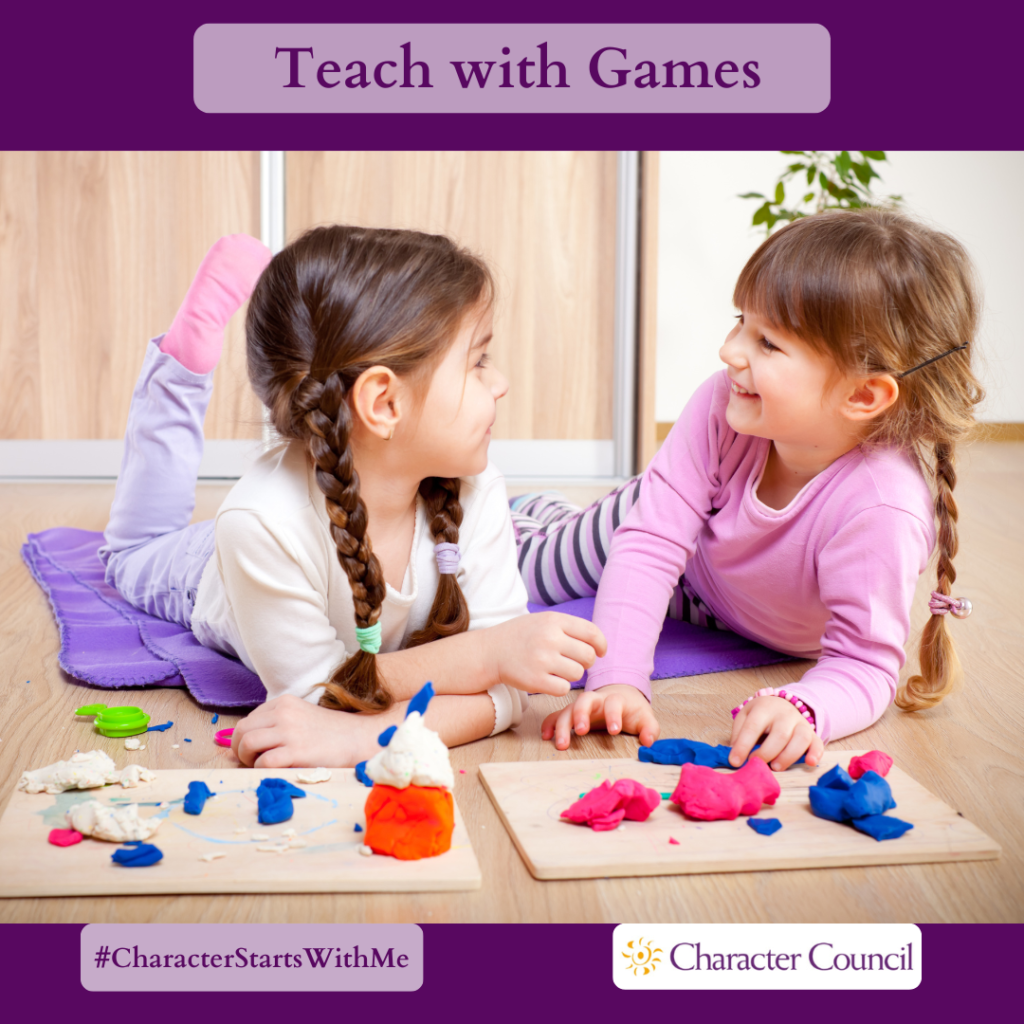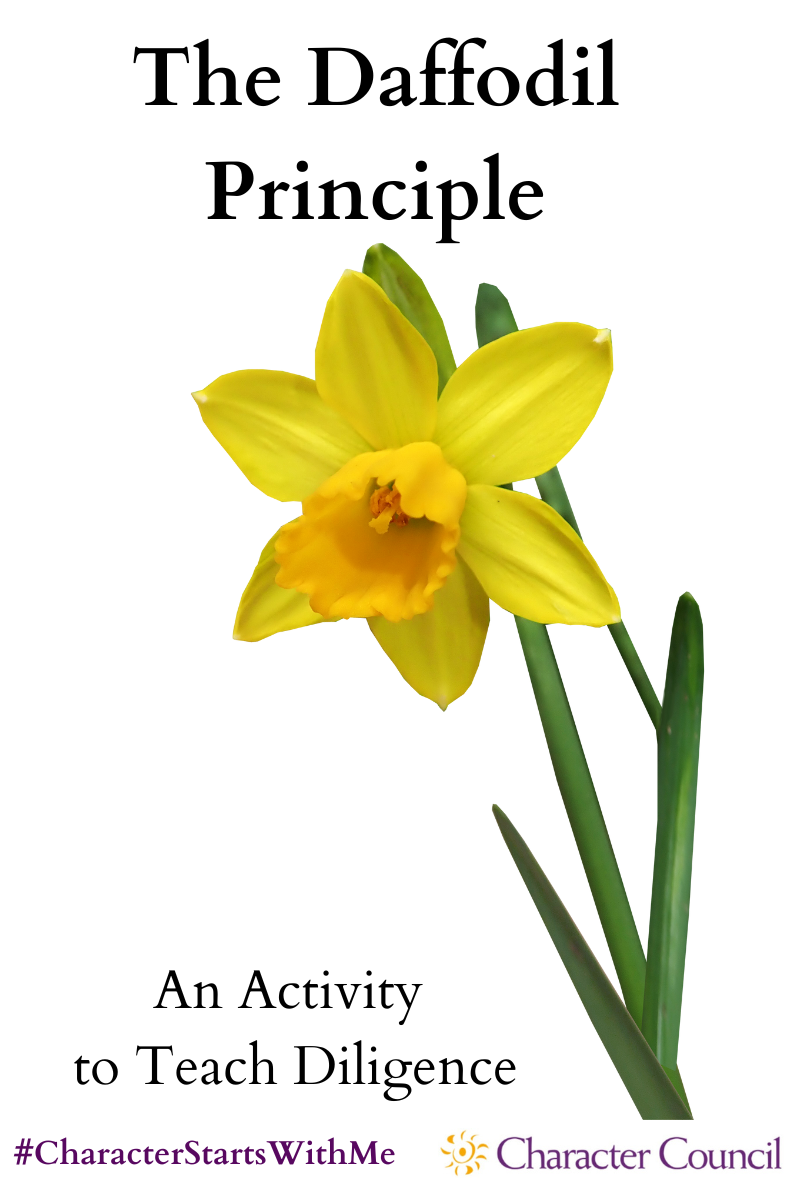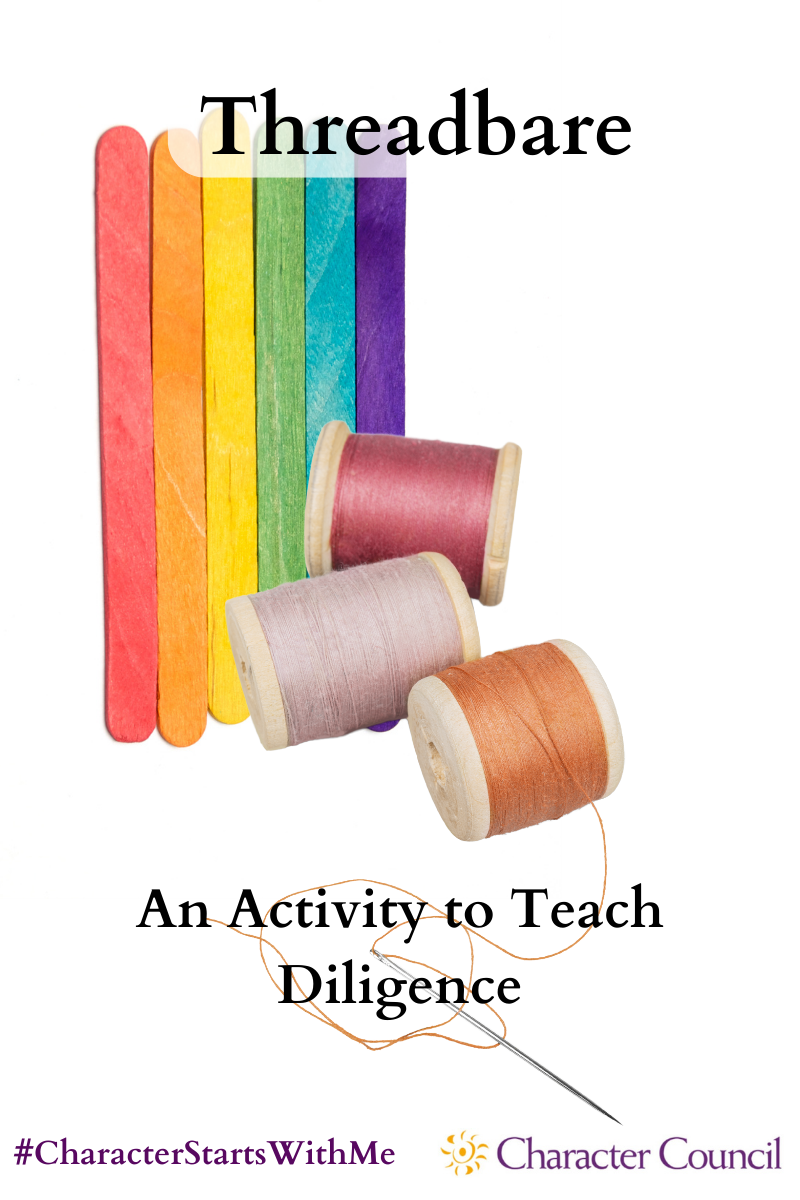
Diligence Activities
The activities here are fun ways to teach character. The game aspect makes the lesson more memorable. Each activity has processing questions at the end. Without processing the activity, the exercise is just a game. To make it a stronger lesson when you process it, relate the character quality to a core value that your organization promotes.
Consider picking a student to run the activity. You will need to give them time ahead of the activity to prepare. Another option is to pick a few students to run the activity for a younger classroom after you have run it for your class. Encourage your students to repeat it in the home for younger siblings or even parents.


The Daffodil Principle
‘The Daffodil Principle’ by Jaroldeen Asplund Edwards is a story about an actual place, a daffodil garden near Running Springs in California. An entire mountainside covered in daffodils, a flower that only blooms 3 weeks out of the year. This field did not come about on its own. One woman with her two hands planted each of the 50,000 bulbs, but it took her over 40 years to do it.
An excerpt from the end of the story reads:
“The principle her daffodil garden taught is one of the greatest principles of celebration. That is, learning to move toward our goals and desires one step at a time–often just one baby-step at time–and learning to love the doing, learning to use the accumulation of time. When we multiply tiny pieces of time with small increments of daily effort, we too will find we can accomplish magnificent things. We can change the world …
‘It makes me sad in a way,’ I admitted to Carolyn. ‘What might I have accomplished if I had thought of a wonderful goal thirty-five or forty years ago and had worked away at it one bulb at a time through all those years? Just think what I might have been able to achieve!’ My daughter summed up the message of the day in her usual direct way. ‘Start tomorrow,’ she said.”
This story demonstrates how diligence, when applied to any task, can create amazing results.
For the written version: The Daffodil Principle
After sharing parts of the story, revisit the regret expressed by her mother. What could we do if we do it a little bit at a time. Ask the students to name some things that they could accomplish by doing small tasks every day. Suggest that studying for a test, such as a spelling test, every night could lead to good results on the test. Practicing foul shots, the ballet positions, scales on an instrument could lead to better performance. What if they wrote a thank you note everyday? (Good class project.) or just picked someone to compliment everyday. What about picking up trash in the school yard or on the way home?
To process this activity, ask these questions:
- Did you like the story of the daffodils?
- How do you think the woman who planted them feels when she sees them in bloom?
- How do you think other people feel when they see them?
- Did you think of something like that, that you can do?
- How does that make you feel when think about little jobs leading to big results?
- When you get overwhelmed with something, do you think you will remember the daffodils?

Threadbare
For this activity, you will need two Popsicle sticks or small twigs, and a couple spools of thread. Students can pair up, or this can be a small group activity. One student should hold the two sticks in front of them, while another student ties one circle of thread around the sticks. Each student should take one stick and then attempt to pull them apart. The thread should snap easily at this point. Repeat the thread tying, but this time tie two circles of thread. It should be a bit harder to snap the thread. Repeat the thread tying, adding one more loop of thread each time, until the thread will not break.
Now make a list on the board of good and bad habits, like doing homework versus not picking up after yourself. Habits are a lot like the thread. The more times we act with diligence, the stronger the habit is, the stronger the inclination to act with diligence when we are facing a challenge.
To process this activity, ask these questions:
- Did you expect to be able to break the thread with only one loop?
- Did you make a guess at how many loops of thread it would take until it wouldn’t break?
- Strengthening your diligence is like strengthening a muscle. Do you think that even little examples of diligence will strengthen your overall diligence?

House of Cards
A house of cards is created by stacking one card on top of another, one card at a time, to create a structure. There are many different types of card houses on record, including ones up to 75 card stories tall, and even one that is a replica of Cinderella’s Castle in Disney World! Card stacking is hard, though, as with the slightest breeze or jostle of a surface, the entire thing could be lost in the shuffle. Diligence is key when trying to create a house of cards, as it will give one the will to see the project through.
Have students bring in packs of cards from home and try it out in the classroom. Divide into small groups and let each group build a house. For instructions and tips on the different ways to build a card house visit: Build a House of Cards. If the card structure falls, be encouraging. Perhaps using the other method for stacking will work better? https://www.wikihow.com/Build-a-House-of-Cards.
To process this activity, ask these questions:
- Did you like building a card tower?
- How tall did the house of cards get?
- How many times did they have to start over because someone wasn’t being diligent?
- Did you step back at any time and view your progress?
- The next time you have a repetitive job to do will you remember the slow progress of a house of cards?